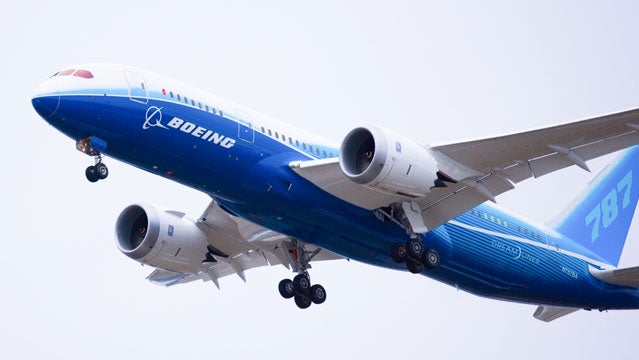My dad always told me not to buy a car in its first year of production, because there are always design problems that need to be ironed out. It’s looking like, despite their extensive flight testing regimen, he was talking about jumbo airliners, too. Consider: according to The Guardian, . It seems impossible that every little part and piece of electronics would work as flawlessly as the plane’s engineers predicted in the design or initial tests.
The Dreamliner initially generated excitement among airlines and environmentally conscious flyers (including myself) because it’s 20 percent more fuel-efficient than the old 767 planes it’s replacing. The improved gas economy comes from lighter (but stronger) composite plastic material used on the body, improved engines, and a lithium ion battery-powered electrical system that replaces a traditional jet’s hydraulics.
Worries about the plane’s safety arose in early January, when one of the batteries inside an empty Japan Airlines Dreamliner in Boston caught on fire. Shortly afterward, another battery, this time on an All Nippon Airlines 787 started smoldering during a flight, leading to an emergency landing. These two incidents initiated the grounding of all 50 Dreamliners in operation around the world.
The investigation of what went wrong and how it will be fixed is ongoing. For the sake of Boeing and the American economy, I hope a solution comes fast, though .
Is there an inherent flaw in the lithium ion batteries? Were a couple of them just manufactured poorly? Do different batteries need to be used? Should a new electrical system be installed on all 850 of the 787s already sold? No one knows the answers yet. But I can at least give you an answer to your question, Kathleen—and it’s “yes.” I’ll absolutely be willing to fly in the Dreamliner once it’s back up and running. I trust that Boeing, the airlines, and the FAA will all be meticulous in ensuring its safety before passengers are let on board again.


